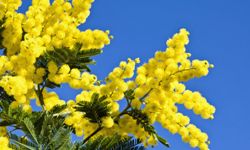
The Japanese maple (Acer palmatum) is a deciduous tree from Asia with beautifully colored foliage. In spring and summer, leaves can be yellow, green or bright pink, while autumn brings spectacular shades of bright gold, crimson, orange and reddish-purple. Acers, as they're also called, come in many varieties. There are multi-trunk and single-trunk trees, for example, and a weeping variety that's wider than it is tall, with dramatically sculpted limbs. Overall, the trees range in size from dwarf maples that can be grown in containers on up to 25-foot (7.5-meter) giants. And they sport a variety of different leaf shapes and silhouettes, too.
While Japanese maples are slow-growing trees, one of the reasons they're popular is that they're easy to grow and don't require a great deal of care. Planting is best done any time from October through March in a partially shaded area protected from the wind. Acers do best in well-drained, loamy earth, since they have a shallow root system. Ideally, the soil should have a pH between 5.5 and 6.5.
Advertisement
Once established, Japanese maples need little in the way of watering, pruning and fertilizing. And they're not prone to insect infestations or disease, either. Perhaps the only downside to this tree is that it's pricier than many others.
Here's how to care for your Japanese maple by season.
Advertisement


